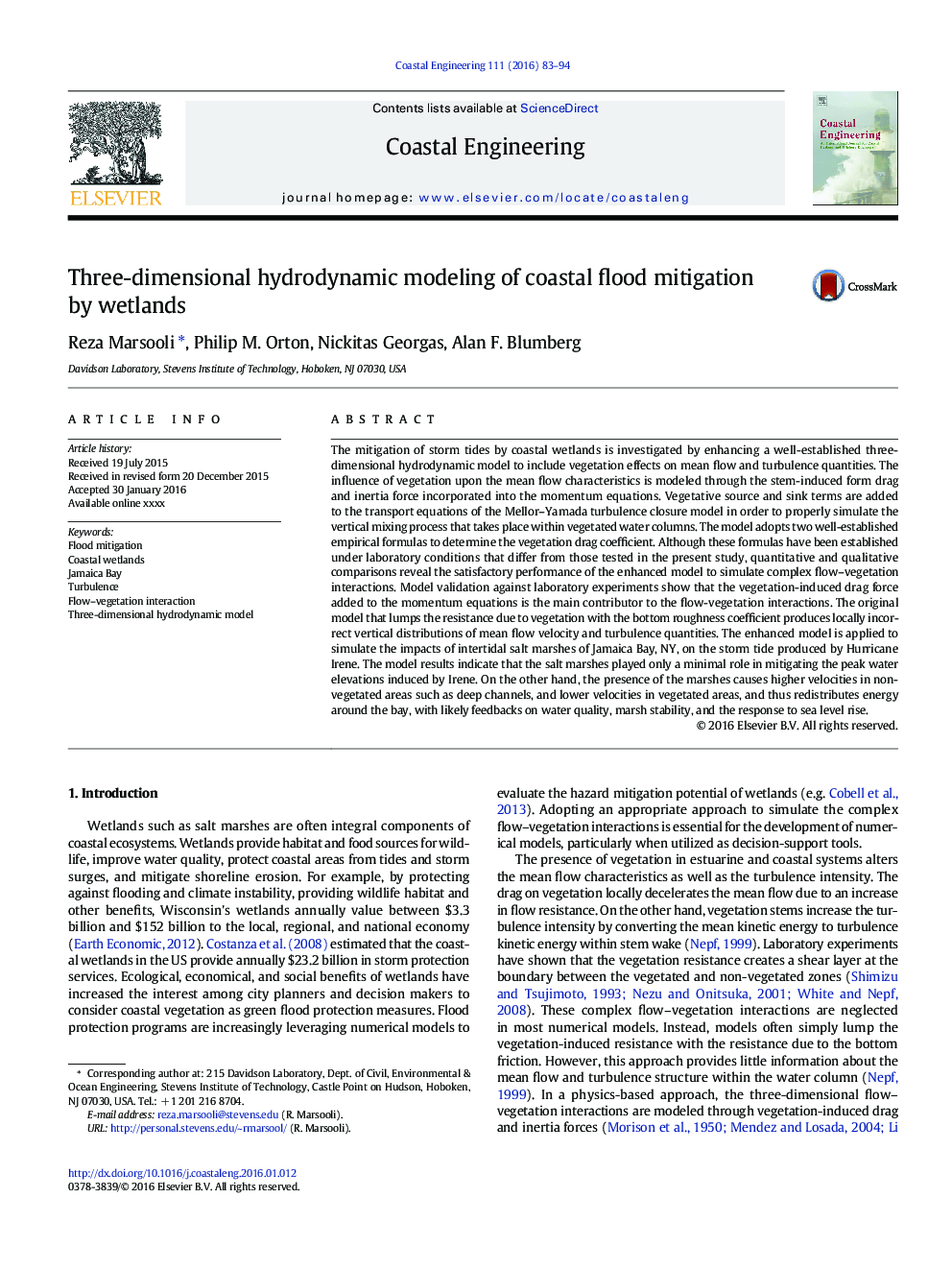| کد مقاله | کد نشریه | سال انتشار | مقاله انگلیسی | نسخه تمام متن |
|---|---|---|---|---|
| 8059756 | 1520343 | 2016 | 12 صفحه PDF | دانلود رایگان |
عنوان انگلیسی مقاله ISI
Three-dimensional hydrodynamic modeling of coastal flood mitigation by wetlands
ترجمه فارسی عنوان
مدل سازی هیدرودینامیکی سه بعدی از کاهش سیلاب های ساحلی توسط تالاب ها
دانلود مقاله + سفارش ترجمه
دانلود مقاله ISI انگلیسی
رایگان برای ایرانیان
کلمات کلیدی
کاهش سیل، تالاب ساحلی، خلیج جامائیکا، آشفتگی، تعامل پوشش گیاهی، مدل هیدرودینامیکی سه بعدی،
موضوعات مرتبط
مهندسی و علوم پایه
سایر رشته های مهندسی
مهندسی دریا (اقیانوس)
چکیده انگلیسی
The mitigation of storm tides by coastal wetlands is investigated by enhancing a well-established three-dimensional hydrodynamic model to include vegetation effects on mean flow and turbulence quantities. The influence of vegetation upon the mean flow characteristics is modeled through the stem-induced form drag and inertia force incorporated into the momentum equations. Vegetative source and sink terms are added to the transport equations of the Mellor-Yamada turbulence closure model in order to properly simulate the vertical mixing process that takes place within vegetated water columns. The model adopts two well-established empirical formulas to determine the vegetation drag coefficient. Although these formulas have been established under laboratory conditions that differ from those tested in the present study, quantitative and qualitative comparisons reveal the satisfactory performance of the enhanced model to simulate complex flow-vegetation interactions. Model validation against laboratory experiments show that the vegetation-induced drag force added to the momentum equations is the main contributor to the flow-vegetation interactions. The original model that lumps the resistance due to vegetation with the bottom roughness coefficient produces locally incorrect vertical distributions of mean flow velocity and turbulence quantities. The enhanced model is applied to simulate the impacts of intertidal salt marshes of Jamaica Bay, NY, on the storm tide produced by Hurricane Irene. The model results indicate that the salt marshes played only a minimal role in mitigating the peak water elevations induced by Irene. On the other hand, the presence of the marshes causes higher velocities in non-vegetated areas such as deep channels, and lower velocities in vegetated areas, and thus redistributes energy around the bay, with likely feedbacks on water quality, marsh stability, and the response to sea level rise.
ناشر
Database: Elsevier - ScienceDirect (ساینس دایرکت)
Journal: Coastal Engineering - Volume 111, May 2016, Pages 83-94
Journal: Coastal Engineering - Volume 111, May 2016, Pages 83-94
نویسندگان
Reza Marsooli, Philip M. Orton, Nickitas Georgas, Alan F. Blumberg,
